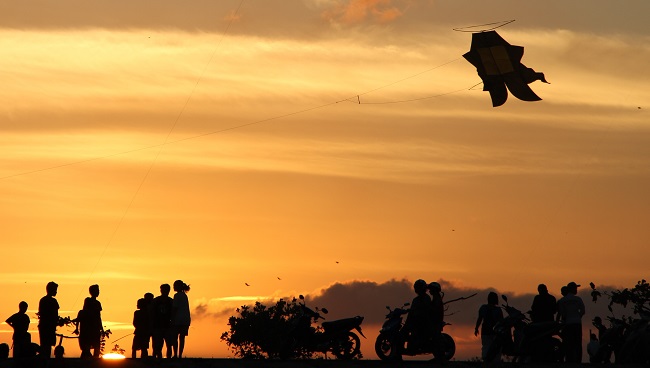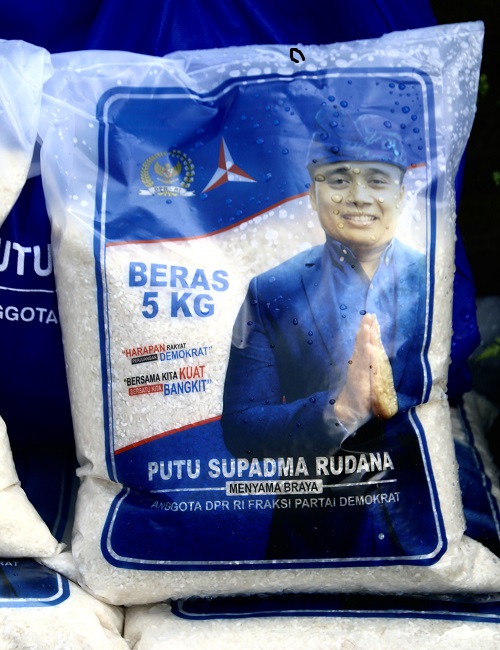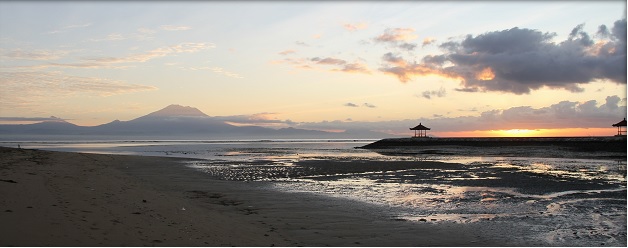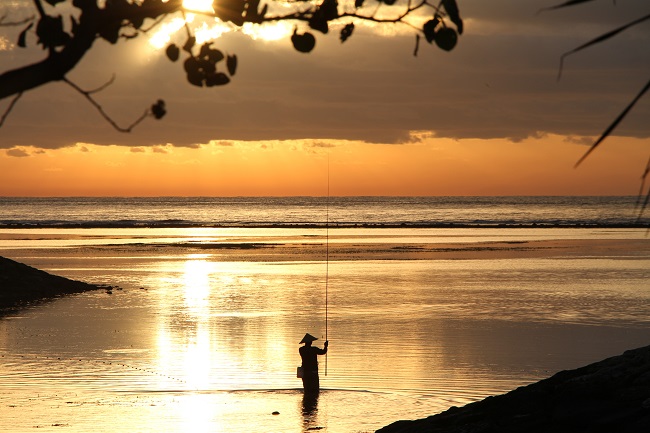Paul Walters
A thin cuticle of a new moon casts its weak light across the deserted port town of Padangbai on Bali’s east coast. The strip of bitumen leading into the harbour is intermittently sewn together by the headlights of one or two cars slowly making their way to the dock to board the inter-island ferry. I pass two old men walking slowly along the empty streets as if they do not want to go where they are going.
Time has stood still here for the last two years and seems reluctant to begin ticking anytime soon. This once-thriving port, where ferries and fast boats loaded their precious cargo of carefree holidaymakers heading for the beaches of the Gili Islands, Lombok and beyond, is now eerily quiet. Those tourists who provided a lucrative living for most of the town’s residents are gone, for, as one man sitting on the pavement outside of a shuttered fast boat ticket office ruefully told me, ‘Nobody comes here anymore’.
For the people of Padangbai and the thousands like them across the island, each time a small glimmer of hope appears, another lockdown, a spike in hospital admissions, the emergence of a new variant or yet another government decree seems to quickly thwart it.
The only thing to do is wait.
The pandemic has rocked Bali’s economy to its core. The province’s GDP contracted by a whopping 9.31 per cent in 2021, primarily due to its paralysed tourism sector, which, until COVID-19 arrived, accounted for over half of the island’s income.

With the spike in infections during 2020/21, Indonesia found itself in the unenviable international position of being classed as a ‘red zone’ and consequently, tourism all but dried up. Some determined travellers still managed to trickle into the country via Jakarta, with over 80,000 making the journey and enduring ever-lengthening hotel quarantine stays.
On the other hand, Bali welcomed fewer than 50 international arrivals, almost all by sea, a minuscule fraction of the six million who visited the island in 2019.
During my travels across the island over the past 12 months, however, I have noted a palpable sense of resilience. The Balinese still smile, offer daily prayers to the Gods, feed the ever-growing packs of stray dogson the beach, diligently fish the shallow waters off the coast, fly their kites and meet their counterparts at the end of the day to chat and gossip, coming together as they have always done.
Two years on, the fightback is in full swing, with over 80 per cent of Bali’s adult population now fully vaccinated, most having received the Sinovac vaccine, whose efficacy against the Omicron variant remains in doubt. However, there is a sense of optimism, given that the peak of infections and deaths of August 2021 has passed.
Even with these encouraging signs, in late 2021 the government’s ban on international arrivals from more than a dozen ‘badly affected’ countries, including the United Kingdom, in response to the rise of the Omicron variant there, saw optimism again dissolving. It is akin to a game of snakes and ladders, where, like Sisyphus, the residents slip and slither, ending up at the bottom of the mountain once again. Until the government lifts quarantine restrictions and international flights return to Bali's airport, things will remain pretty much as they are.
In the interim, the government has sought to court domestic visitors. The 2021 festive season saw a dramatic change in visitor numbers compared to 2020. As a result, most of the five-star resorts on the island and fine dining establishments ran virtually at total capacity.
The patrons? Indonesians.
From across the archipelago, they descended on Bali, swelling the near-empty coffers of hotels, which saw their occupancy rates go from single digits to 100 per cent. It is an encouraging sign, but the reality is that domestic tourism alone will not drag the tourism sector back to the lofty heights it once enjoyed.
Unemployment remains rampant, and many of the thousands of hospitality workers laid off have returned to their villages or rely on food handouts or sembako (an abbreviation describing nine basic food materials) in the once-thriving southern tourist hot spots. I was privy to one of these handout ‘ceremonies’ in Ubud where a politician and his substantial entourage distributed thousands of 10kg bags of rice branded prominently with his image and accompanied by a catchy campaign slogan. It made for a good soundbite given the bevvy of television and press photographers in attendance.
There is nothing like using a disaster to fish for a few more votes.

There is a lack of transparency in reporting government statistics due to the low rates of testing. Accordingly this absence of information has meant that citizens have stepped up to share local stories on a myriad of social media sites to keep each other informed about the status of the pandemic. A downside of this is that the rumour mill runs at full speed, fuelling conspiracy theories.
If one area of Bali seems to be oblivious to this pandemic, it is the ‘hip’ suburb of Canggu that still lures a young, white, seemingly affluent crowd who have no time for conformity. They are a vocal anti-vax, anti-mask-wearing lobby and have attitude to burn. Here, the cafés, trendy bars, and beach clubs are crowded, seemingly oblivious to the carnage enveloping the rest of the island.
Even though this pandemic has wrought economic chaos, perhaps there is a silver lining for this is a warning to step back from the over-reliance on tourism and the cash flow it generates. It has perhaps created a much needed void where officials have the time to confront the societal issues created from decades of tourism–fuelled over-development.
One can only hope.

The loss of the tourist hustle and the near absence of gridlocked traffic has created a silence that has draped itself across the island, soft as gossamer opening up a new world. Expatriates who stayed on during the pandemic have been given a rare glimpse of what Bali must have been like before millions of tourists arrived each year, it is now pristine, silent, ancient, and stunningly beautiful.
One day the tourists will return, places like Padangbai will spring back to life, the warungs, shuttered restaurants, and shops will open, and incomes will rise again. Bali appears to be waiting quietly, never really complaining, putting their faith in the Gods who will judge when the time is right.
Until then, people will manage, make it work, return to their kampongs and banjars and rely on each other.
The wait perhaps will soon be over.
Astungkara
Paul v. Walters is the author of several novels and anthologies of short stories. In addition, he scribbles for several international travel and vox pop journals when he is not cocooned in sloth and procrastination in his house in Bali.












